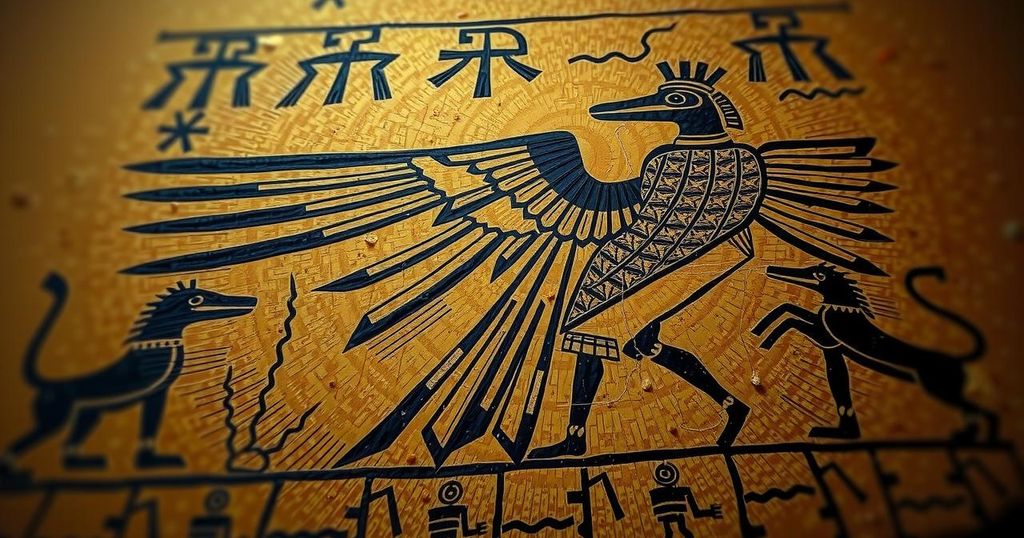AI Aids Discovery of Hundreds of Ancient Nazca Drawings in Peru

Utilizing artificial intelligence, researchers have uncovered hundreds of ancient Nazca geoglyphs in the Peruvian desert, including depictions of decapitated heads and llamas. These smaller figures, dating back around 2,000 years, were discovered by analyzing aerial photographs. The study revealed 303 unique geoglyphs, with significant implications for understanding Nazca cultural practices and preserving their heritage amid modern threats.
Recent advancements in artificial intelligence have led to the discovery of hundreds of ancient drawings in the Peruvian desert, specifically geoglyphs attributed to the Nazca culture. These remarkable artifacts, which include depictions of decapitated human heads and domesticated llamas, date back approximately 2,000 years. Unlike the more monumental Nazca lines characterized by vast geometric patterns and massive animal shapes, these new findings reveal smaller, intricate figures measuring around 9 meters in length, reflecting a different aspect of Nazca artistic expression. The research team, led by Masato Sakai of Yamagata University, harnessed AI technology to analyze high-resolution aerial photographs covering an area ten times the size of Manhattan. The AI model helped identify areas with a high probability of containing geoglyphs and facilitated more efficient manual inspection by filtering out 98 percent of low-probability images. Researchers dedicated over 2,600 hours to field inspections based on AI suggestions, eventually uncovering 303 distinct figurative geoglyphs, of which 178 were directly identified by AI. This innovative approach represents a significant advancement in the study of Nazca geoglyphs, which have yet to be fully mapped. However, caution remains as researchers emphasize that the technology favors more visible geoglyphs, potentially leaving many undiscovered. Looking ahead, nearly 1,000 AI-suggested candidates still require further assessment during upcoming field surveys. These smaller geoglyphs, which likely played a role in the ritual activities of smaller groups, contrast with the massive Nazca lines thought to be integral to community rituals. The capacity for swift identification of geoglyphs has raised hopes for their preservation, given the threats posed by agricultural development, urbanization, and wind power initiatives.
The Nazca culture, which flourished in southern Peru over two millennia ago, is renowned for its impressive geoglyphs etched into the desert floor. These symbols, which include both enormous line drawings extending several kilometers and smaller figurative representations, are part of a rich historical legacy. The recent discovery of new geoglyphs through AI technology highlights the ongoing significance of the Nazca lines as both archaeological wonders and cultural artifacts. As researchers apply modern methodologies to enhance the understanding and protection of these ancient creations, they also face challenges posed by modern encroachments that threaten to erase invaluable historical sites.
The discovery of numerous ancient Nazca geoglyphs, facilitated by advanced AI technology, represents a remarkable advancement in archaeological research. As researchers continue to unveil the depths of Nazca culture through these smaller, intricate figures, there is a concurrent need to safeguard these findings against contemporary threats. The ongoing efforts and insights gained from AI analysis not only enhance our understanding of the Nazca civilization but also aid in preserving its artistic heritage for future generations.
Original Source: www.newscientist.com








